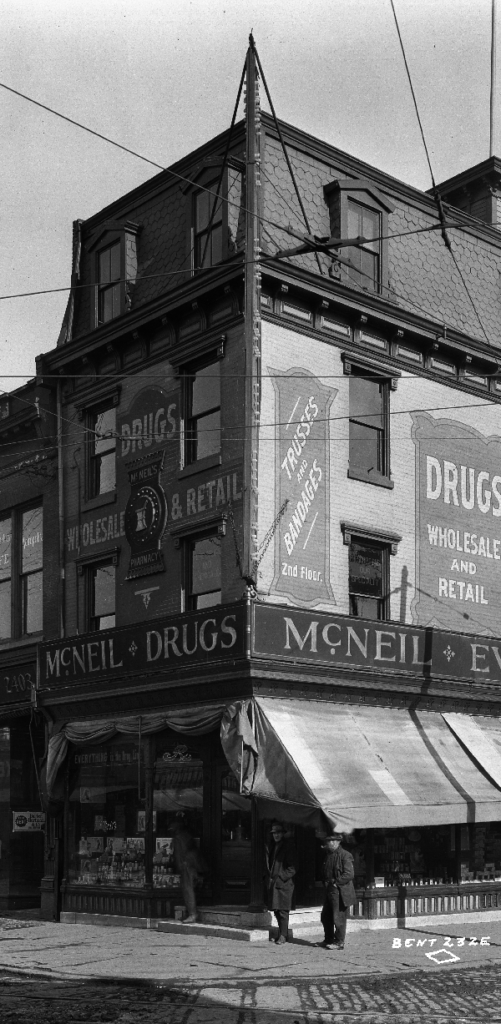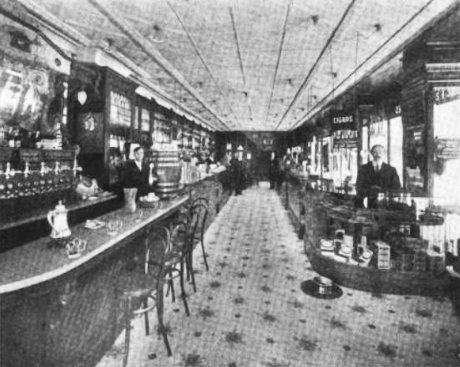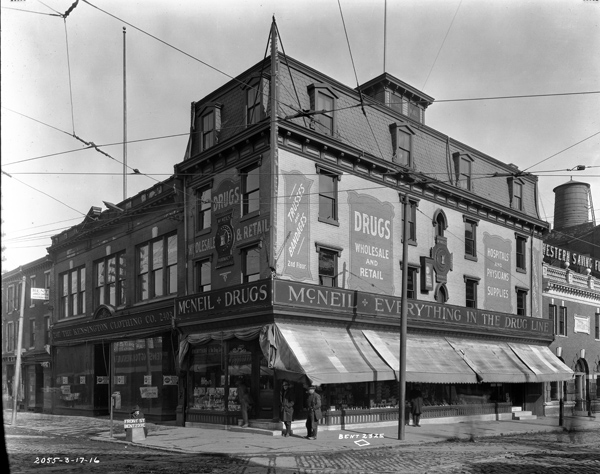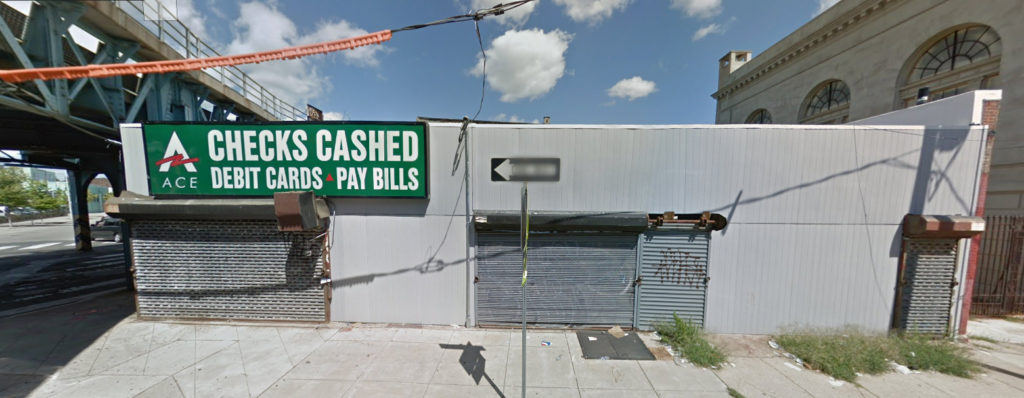On Memorial Day, 1900, Robert McNeil opened his brand-new pharmaceutical and hospital supply store at Front and York Streets with a flag raising. This was the growing company’s second location. The first, outgrown since its 1882 dedication, was located close by at Howard and York Streets.

McNeil’s pharmaceutical emporium would soon be filling 18,000 prescriptions annually, developing “a sickroom supply department, a truss and bandage fitting room and research and manufacturing laboratories.” The company provided physicians with needed supplies throughout Philadelphia and beyond.

1907.
And over the generations, McNeil Laboratories would develop and manufacture a number of new pharmaceuticals. In 1953, they introduced Algoson, a preparation containing acetaminophen and sodium butabarbital. Two years later, after FDA approval, they introduced Tylenol Elixir for children, containing only acetaminophen. Discovered in the 19th century, Tylenol became an over-the-counter medicine in 1960.
By then, the company that made Tylenol a household word was acquired by Johnson & Johnson. McNeil Laboratories had relocated from Kensington to larger quarters at 17th and Cambria Streets in North Philadelphia. They would move again, to a 110-acre tract in Fort Washington, far beyond Philadelphia’s city limits.
Meanwhile, the burgeoning manufacturing neighborhood of 19th- century Kensington, once populated with smoke-belching factories and miles of brick rowhouses, was eroded by decades of deindustrialization and disinvestment. It gradually bore no resemblance to the community where businesses like McNeil had once set up shop. Rather, it became a place, as The New York Times put it, where “the streetlights were broken or dim, and the alleyways were dark. Most of the blocks were lined with two-story rowhouses, abandoned factories and vacant lots.” The beleaguered area’s alarming association with illicit opioid use, overdoses and drug trafficking repeatedly made national news and prompted repeated outcries from the community and city officials.
Commercial Kensington became “a congested mess of Chinese takeouts, pawn shops, check-cashing joints” not unlike the one at Front and York Streets, pictured below, where the McNeil pharmacy once thrived.
[Sources: Jennifer Percy, “Trapped by the ‘Walmart of Heroin,’” The New York Times Magazine, Oct. 10, 2018; April 20, 2022; “A Successful Store in Philadelphia,” The Bulletin of Pharmacy, Vol. 21, pp. 370-371 (E.G. Swift, 1907); History of TYLENOL. McNeil Consumer Healthcare Company].



One reply on “Kensington Then and Now”
Deindustrialization and disinvestment- that will do it to any area, but the small and inexpensive housing stock won’t even allow much of Kensington to make a residential comeback. Brewerytown is a comparable area that has had a turnaround, perhaps due to its location to Fairmount Park. Kensington, sadly, has no parkland, just a few squares of greenspace.